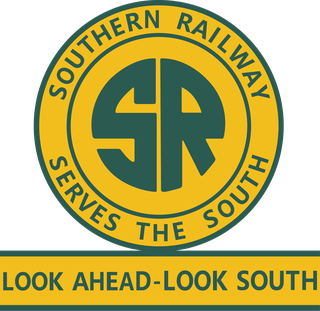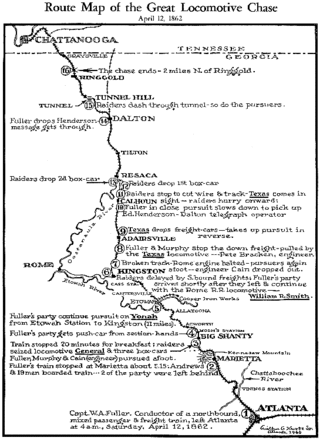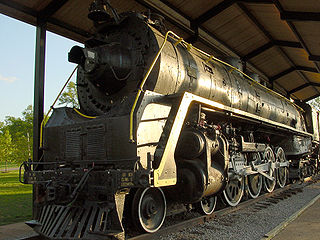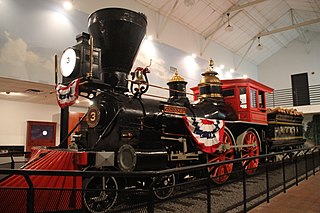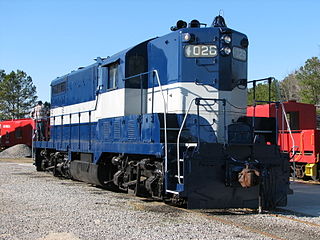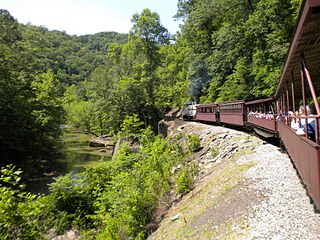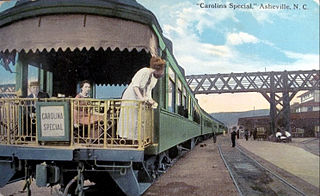This article needs additional citations for verification .(June 2019) |
 | |
| Overview | |
|---|---|
| Reporting mark | TC |
| Locale | Tennessee |
| Dates of operation | 1893–1968 |
| Successor | Nashville and Eastern Railroad (Nashville to Monterey) |
| Technical | |
| Track gauge | 4 ft 8+1⁄2 in (1,435 mm) standard gauge |
The Tennessee Central Railway was founded in 1884 as the Nashville and Knoxville Railroad by Alexander S. Crawford. It was an attempt to open up a rail route from the coal and minerals of East Tennessee to the markets of the midstate, a service which many businessmen felt was not being adequately provided by the existing railroad companies. They also wanted to ship coal and iron ore to the Northeastern US over the Cincinnati Southern Railway, which was leased to the Southern and operated as the Cincinnati, New Orleans and Texas Pacific Railway (CNOTP), through their Cincinnati gateway. The N&K was only completed between Lebanon, where it connected to a Nashville, Chattanooga and St. Louis Railway branch from Nashville, and Standing Stone (now Monterey).
Contents
- Early 20th century passenger service
- Postwar years and decline
- Surviving portions
- See also
- References
- External links
By the 1880s railroads were becoming a mature industry and it was not easy for a new competitor to break in. The firm and its successor companies would struggle for decades with both financial woes and hostility from the more established lines. (It was unable to use Nashville's ornate new Union Station terminal for instance, as that was controlled by the rival Louisville and Nashville Railroad and its subsidiary Nashville, Chattanooga & St. Louis.) The Tennessee Central linked Knoxville directly, by a link to the Southern Railway's subsidiary Harriman and Northeastern from Harriman to Knoxville, with Nashville via a route which ascended the Cumberland Plateau Escarpment at Walden's Ridge between Emory Gap and Crossville. The traditional major route for this passage had been made via Chattanooga.
In 1893, enter the likes of entrepreneur "Colonel" Jere Baxter. He was known as charismatic and regarded as ruthless. Although no money could be found in Tennessee to complete the property that was to be the Tennessee Central, he traveled to St. Louis and eventually found backing. For much of his construction financing, he issued bonds. He organized and constructed four lines that, together with the N&K acquired from the Crawford family, were to become the Tennessee Central. The lines were reorganized in 1902 and renamed the Tennessee Central Railroad. Several versions of this name were used over a period of some thirty years, until the final name, Tennessee Central Railway, was adopted in 1922.
The line expanded slowly and piecemeal to the west and north of Nashville during this period, falling into receivership twice, in 1897 and 1912, on the latter occasion operating in technical insolvency for ten years. Baxter died in 1904, leaving as his heritage the now completed TC, which was heavily burdened with debt. Although the company was operating "in the black", they were unable to meet their bonded indebtedness, which was incurred from the building of the line. In 1905, the TC was leased for three years to the Illinois Central Railroad west of Nashville and the Southern east of Nashville. Due to unprofitable operations, neither line opted to renew their lease. In 1922, a group of investors led by Paul M. Davis bought the railroad at a bankruptcy sale, thus abolishing the bonded indebtedness. They hired former president Hugh Wright Stanley, who operated the line profitably (except during 1932 and 1933) until 1945. The first diesel-electric locomotive switcher was brought to Nashville in 1939 by the TC.
